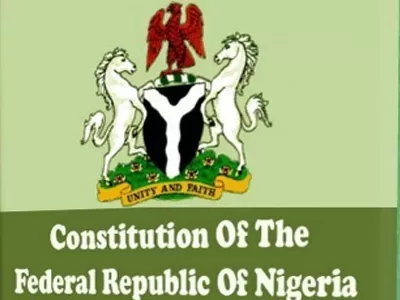In 1948, Sir John Stuart Macpherson replaced Sir Authur Richards as Governor-General of Nigeria and shortly after taking office he began drafting a new constitution for Nigeria known as the Macpherson Constitution of 1951. He was very patient and careful not to let this happen do it. repeat. the mistake of his predecessor, Sir Authur Richards, whose constitution (known as the Richards Constitution of 1946) was heavily criticized by Nigerian nationalists for being forced on Nigerians and in force without prior consultation. Sir Macpherson ensured that Nigerians were involved in the drafting of the constitution, and on January 9, 1951, delegates from the northern, western and eastern regions of Nigeria met in Ibadan for a constitutional conference. At the 1950 Ibadan Conference, proposals and decisions were generally based on the Macpherson Constitution of 1951. For example, it was decided that Nigeria should adopt a federal system of government and Lagos should be self-governing. In 1951, three years after his return to office, Sir Macpherson finally implemented the long-awaited constitution, which was accepted by Nigerians as having been written by him.
Here are the Features of Macpherson Constitution of 1951
1. Central Legislative Council– The Macpherson constitution made provision a central Legislative council also called House of Representatives. The Legislative council consisted of 148 members of whom 136 were elected from the Regional Houses. 6 members were appointed by the Governor and 6 also were ex-official members.
2.Central Executive Council – This was called the “Council of Ministers” and consisted of 12 Nigerian ministers, 6 former official members and the President (Governor).
3. The country was divided into three unequal regions: the Northern Region, the Western Region and the Eastern Region.
4. Regional Executive Councils – The Macpherson Constitution of 1951 provided for the creation of Executive Councils for the regions. The executive councils were headed by lieutenant governors. All members (five civil servants and nine ministers, including four Nigerians) were appointed by the deputy governors.
5. Regional Legislative Councils – The Constitution created a Legislative Council for the three regions. The Legislative Council was called the House of Assembly.In the Northern Region there was a bicameral Legislative Assembly (the “House of Assembly” and the “House of Chiefs”), while in the Eastern and Western Regions there was a unicameral Legislative Assembly (the “House of Assembly”)
6. The constitution created the office of governor.
7. In the north only male taxpayers voted, in the east and west both men and women voted.
8.Establishment of a civil service commission for the recruitment, dismissal and promotion of civil servants and civil servants.
9. Elections are direct and indirect elections

